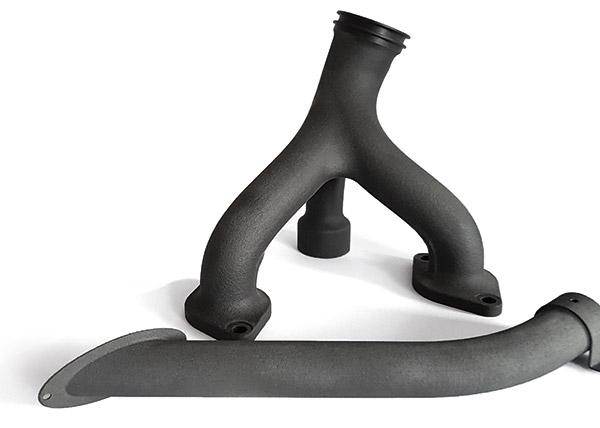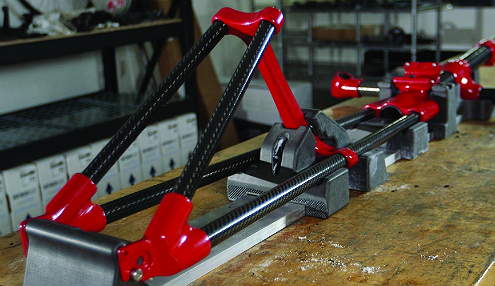In the first installment of this series, we looked at how 3D printing is being used in bicycles before going deeper and also exploring the use into 3D printing for e-bikes. Next, we examined potential disruptions in the value chain.

To recap: in several industries, from space components to rocket propulsion, we have seen the use of 40/40/40/40/40, the five forties. The five forties represent the ideal business case for 3D printing where we see:
- a potential reduction of part count by a factor of 40
- a reduction in mass of 40%
- a reduction of weight of 40%
- 40% less time to produce a part
- 40% less cost overall
If we can then also see low production runs, mass customization, shapes that can only be made with 3D printing, or timely production, we can speak of a true 3D printing ideal. This doesn’t mean that 3D printing will never work in other industries, but, the five forties and other contributing factors typically tend to wipe out the entire industry in under three years.
Bicycles do not have the huge part counts of many other objects. We can easily view stays, pins, fasteners, and tubes becoming one. We could print groupset components attached to the bicycle. We could also reduce components overall but at a much greater cost. Mass reduction is less important in bikes, but weight is important. We can easily make super lightweight parts and there is a lot of weight fetishism in the professional biking and high-end consumer spaces. So, this would be an important factor.
The production time to part would be valuable for companies that are direct-to-consumer, such as those operating in category four below. Similarly, high buy-to-fly ratios would be very meaningful for companies working with expensive materials or processes, as many in the bike market are. For shapes in which a lot is left on the shop floor after being cut away, there could be sources of value here. The bike is already super optimized generally, however, with tubes made in optimal processes for tubes, gears cut by long-trusted machinery, and other items machined via optimal methods, as well.
Overall cost reductions can be realized in areas like orthopedics and rocket engines. Bike components are often very high margin, but many of them use processes that are low cost in terms of machine hour and have been running that way for 100 years. Everything is written off. It will be difficult to reduce cost through 3D printing in this case.

Windform FR1 is black and reinforced with carbon fiber. Here is has been used to 3D print piping for an air conditioning system.
So, the business case for 3D printing in bicycles is not ideal. But, mass customization could bring a lot of benefits. Everyone’s bike is wrong—unless you’re a Tour de France competitor, in which case your bike may be optimal. But, on the whole, we can say that almost no bikes have been adapted to the individual power output, motions, and body of every bike user. A geometry that is unique to you, components with exactly the right length for you and your riding position, are not often being made. Yes, you can have unique bikes made to your length and instep, but not with the right underlying logic to how you output power. This single element could have a huge influence on the bike industry.
At the same time, we can see four very special trends that are occurring in bicycles.
- One is direct-to-consumer, web-based firms such as Canyon and Rose. These companies can afford to have a European factory and custom make bikes to order quickly to satisfy demand. Rather than do this in a niche way, which the round-the-world-bicycle company Santos has done, these firms sponsor big cycling teams and splash out on web-based marketing. The combination of custom-made, mass artisanship, and no distribution network means that this can be a very excellent business. It would be very tempting for Chinese bike manufacturers and part makers to make the leap to go direct-to-consumer. In effect, this could be a better business model for many in the industry. In the case of these players, the 3D printing of components could help them extend their production to more components in the bicycle. The use of 3D printing here would be similar to how Trek’s Bontrager components extends Trek to other brands while it fattens the company’s margins on their own bikes. In this case, individualized 3D printed parts could be used to replace existing Zipp, Fox, Dedacciai or other components. Coupled with quicker, just-in-time production, these companies could really benefit from 3D printing. By coupling scale with mass customization, they could further differentiate themselves with 3D printing and go for better-fitting and more comfortable bikes.
- The rise of China in the cycling supply chain is a very noticeable trend. More components and spares come from there. More of the value of European and American bikes is being created there. These companies are stuck in making low-value parts with low margins. If these players wish to spread worldwide, they could go slow and win over retailers and distributors globally. They could also go direct-to-consumer. Or they could buy one of many teetering European or American brands and make their market entry that way, as Geely has so successfully done through Volvo. Another option is to become a direct-to-Instagram brand with a well-capitalized well-marketed brand and campaign. Through Kickstarter, they could also create new bike brands and offerings. With the global success of DJI and other firms, we should anticipate such moves by Chinese firms. 3D printing could very well become a tool in their belts to enter markets via the razzle-dazzle of 3D printed goods.
- Direct market entry by Kickstarter companies in city bikes, e-bikes, road bikes, and accessories is a significant new trend. Completely novel competitors are standing up every day making Italian-inspired bike clothing, mobile phone holders, wheels, and much else besides. The e-mobility sector is booming and many new entrants will be in competition with existing bike firms. These firms could also turn to 3D printing to make components or offer mass customization.
- Microbrands, custom bike builders, niche brands, bike artisans, small Italian builders, niche builders of downhill mountain bikes can all benefit from using 3D printing to make mass-customized or unique components. These small shops could partner with 3D printing companies to make high-value parts that make for breakthrough performance or marketing. The investment is doable for a niche brand and the resulting success is much like 3D printing itself scalable.

The red-painted parts on this bike frame were printed with Stratasys’ Nylon 12CF, the company’s sole FDM carbon fiber option before this new release (Image courtesy of Stratasys).
Throughout these trends, we can see that 3D printing could aid new market entrants in disrupting the market. A company could compensate for its lack of distribution and brand through offering breakthrough 3D printed goods. All of these above scenarios and players are in my mind likely. Cycling is a market ripe for 3D printing disruption.
Subscribe to Our Email Newsletter
Stay up-to-date on all the latest news from the 3D printing industry and receive information and offers from third party vendors.
You May Also Like
3D Printing Unpeeled: New Arkema Material for HP, Saddle and Macro MEMS
A new Arkema material for MJF is said to reduce costs per part by up to 25% and have an 85% reusability ratio. HP 3D HR PA 12 S has been...
3D Printing News Briefs, January 20, 2024: FDM, LPBF, Underwater 3D Printer, Racing, & More
We’re starting off with a process certification in today’s 3D Printing News Briefs, and then moving on to research about solute trapping, laser powder bed fusion, and then moving on...
3D Printing Webinar and Event Roundup: December 3, 2023
We’ve got plenty of events and webinars coming up for you this week! Quickparts is having a Manufacturing Roadshow, America Makes is holding a Member Town Hall, Stratafest makes two...
Formnext 2023 Day Three: Slam Dunk
I’m high—high on trade show. I’ve met numerous new faces and reconnected with old friends, creating an absolutely wonderful atmosphere. The excitement is palpable over several emerging developments. The high...































